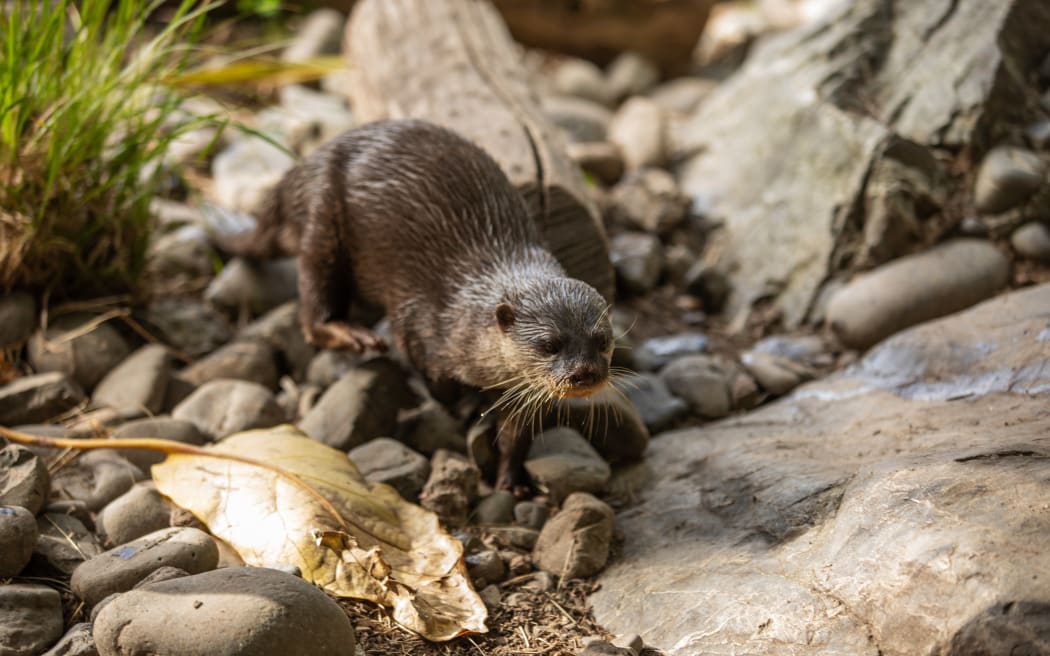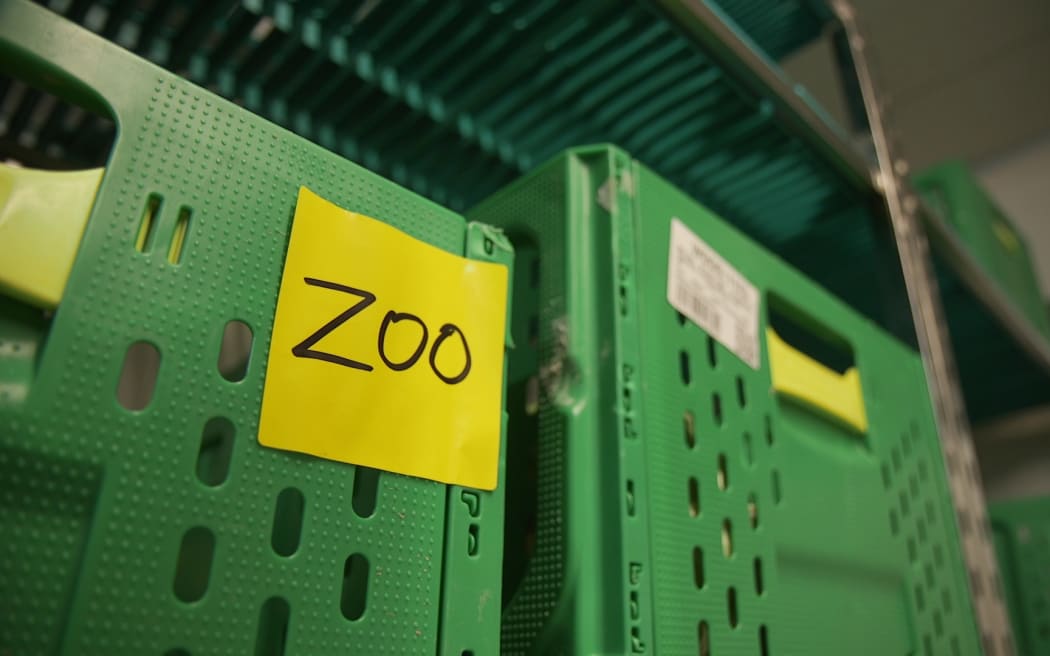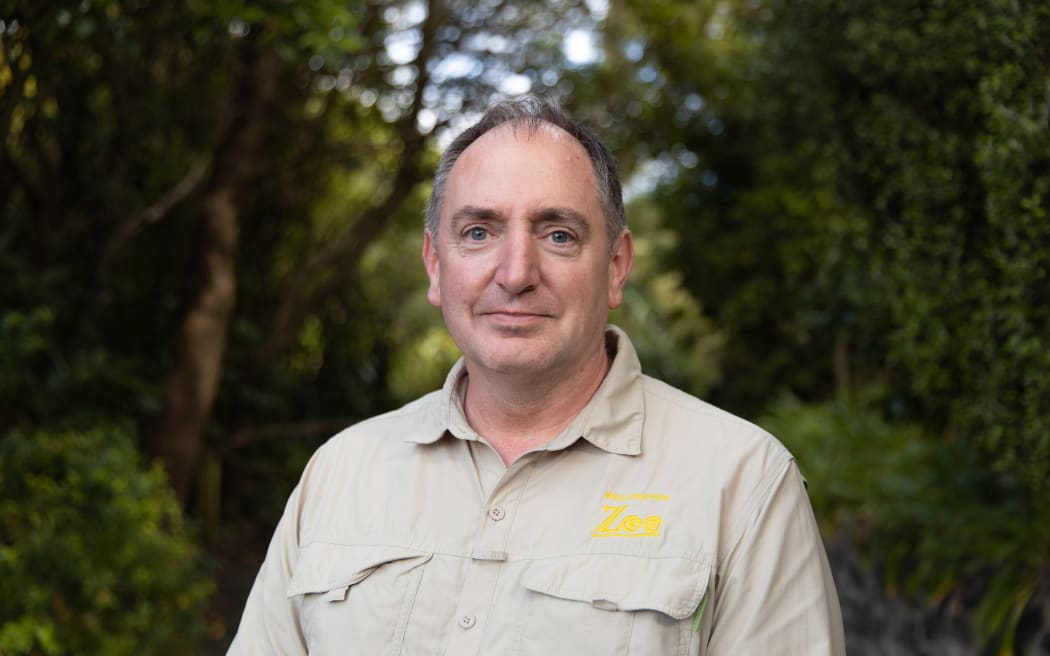Imagine trying to feed a horde of 500 animals on less than 15-hectares of land.
Now imagine, if each of those animals required specialised diets. From the carnivorous meat eaters, to the plant-loving herbivores, mixed-tastes omnivores and seafood-loving piscivores.
Tucked into the hills surrounding the city's suburbs, Wellington Zoo is home to more than 500 animals comprising close to 70 species. They include lions, tigers, giraffes, lemurs, lizards, insects, native birds, red panda and otters.
It's a challenging task catering to so many different dietary needs. Overseeing the zoo's nutrition team, is animal science manager Simon Eyre.
"Every animal has a very, very different diet. From the stick insects that only eat Eucalyptus browse, to the tigers and lions that eat meat, to the meerkats which have a very very different diet to our otters," Eyre says.
A second-generation zookeeper, he's spent 20 of the last 30 years working at Wellington Zoo.

Photo: RNZ / Samuel Rillstone
The nutrition team starts most days at 7.30am alternating between preparing food for that morning - things like cooked eggs or cooked potato - and prepping meals for other days. They process between half a tonne to a tonne of animal feed each week.
"We use a lot of fresh fruit and vegetables, they come from the same suppliers that your cafes and restaurants would get them from. We get the same food you do."
"Because the food is as fresh as you get, if not fresher, it actually keeps really well," Eyre explains.
Inside the freezer, there are buckets filled with pre-prepared meals, a label on the lid telling the keeper which animal it's for.

The zoo's otters are fed five to six times a day due to their high metabolism. Photo: RNZ / Samuel Rillstone
Rows of crates filled with supermarket-grade fruit and vegetables line its shelves. The freezer will be topped up with three pallets worth of produce each week, and emptied out about twice a week.
"The welfare of our animals is paramount. We should not be feeding them sub-par food so they get just as good as you do."
Meat for carnivores like the lions and tigers is sourced from the South Island, and stored in a separate freezer.

Much of the fresh produce is sourced from the same providers that stock our restaurants and supermarkets. Photo: RNZ / Samuel Rillstone
For animals which eat browse, the zoo grows some of its own bamboo but also collects other browsing materials and branches from local arborists.
"If the trees haven't been sprayed with anything, we can use it for our animals," Eyre says.
"The giraffes mainly eat browse, they'll eat lots of leaves from the branches brought in from our arborists and also specialised pelleted food as well."
The pelleted feed is sourcd both locally and overseas, including five to six tonnes from America each year.
Hay is brought in from growers in Hawke's Bay and the zoo also grows its own sprouts using an indoor hydroponics system for some of the birds and insects.

The zoo also grows some food of its own through hydroponics. Photo: RNZ / Samuel Rillstone
Our friends the otters - Eko, Si, Jambi and Bhutan - mostly live off various types of seafood, all of which is MSC (Marine Stewardship Council) certified as part of the zoo's commitment to sustainability.
Despite their small stature, the otters are insatiable eaters and are fed between five to six times a day.
"Otters need multiple feeds per day because they have a very high metabolic rate," Eyre says.
When we join them for dinner, they're each enjoying a small octopus for tea.

Wellington Zoo animal science manager Simon Eyre. Photo: RNZ / Samuel Rillstone

